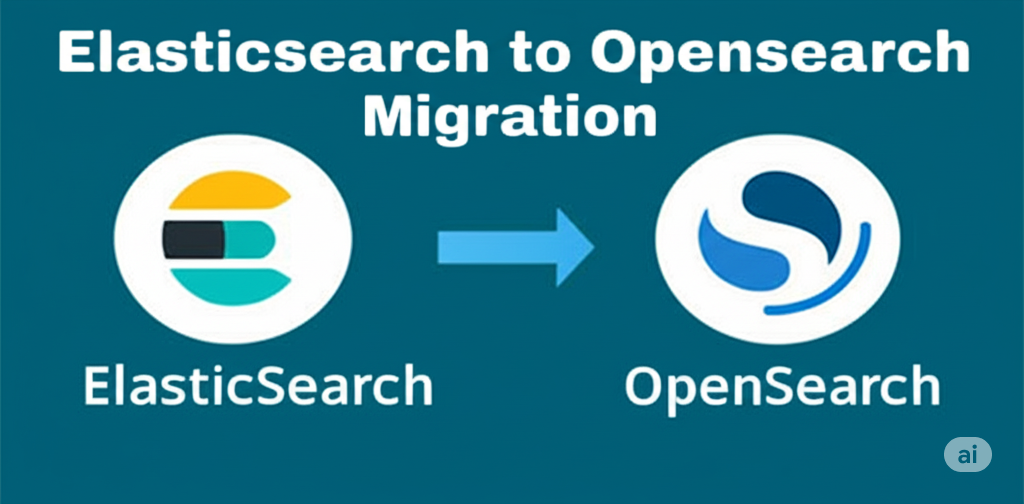Elasticsearch to OpenSearch Migration Guide - Part 1: Why Migrate and Pre-Migration Planning
In this comprehensive 5-part series, we'll guide you through the complete process of migrating from Elasticsearch to OpenSearch. This first part covers the critical decision-making process and essential planning steps.

Elasticsearch to OpenSearch Migration Guide - Part 1: Why Migrate and Pre-Migration Planning
In this comprehensive 5-part series, we'll guide you through the complete process of migrating from Elasticsearch to OpenSearch. This first part covers the critical decision-making process and essential planning steps that set the foundation for a successful migration.
Why Migrate from Elasticsearch to OpenSearch?
Top Reasons for Elasticsearch to OpenSearch Migration
The decision to migrate from Elasticsearch to OpenSearch typically stems from specific technical and business requirements. License compliance has become the primary driver, as organizations running Elasticsearch in production environments must now navigate the complexities of the Elastic License 2.0 or SSPL. For companies offering managed services or embedding Elasticsearch in their products, the licensing restrictions create immediate legal concerns that OpenSearch's Apache 2.0 license eliminates.
Cost optimization represents another compelling factor. Organizations running Elasticsearch clusters with premium features like Security, Machine Learning, or Cross-Cluster Replication face substantial licensing costs. OpenSearch provides these capabilities without licensing fees, including:
- Security plugin with authentication, authorization, and encryption
- Alerting and anomaly detection for operational monitoring
- SQL query support with JDBC/ODBC drivers
- Index State Management for automated index lifecycle
- Performance Analyzer for cluster diagnostics
Technical advantages of OpenSearch include improved cluster stability through enhanced coordination mechanisms and better memory management for large-scale deployments. The platform's commitment to backward compatibility ensures that existing applications continue functioning while new features are added without breaking changes.
When Should You Consider Migration?
Migration timing depends on several technical factors. Organizations should prioritize Elasticsearch to OpenSearch migration when:
Version constraints create upgrade challenges. If you're running Elasticsearch 6.x or 7.x versions and face licensing restrictions when upgrading to 8.x, migrating to OpenSearch preserves your upgrade path without licensing complications.
Multi-cloud deployments require flexibility. OpenSearch's vendor-neutral approach enables consistent deployments across AWS, Azure, GCP, and on-premises infrastructure without vendor-specific limitations.
Compliance requirements mandate open-source software. Government agencies, financial institutions, and healthcare organizations often require true open-source solutions for data processing, making OpenSearch the compliant choice.
When to Stay with Elasticsearch
Certain scenarios favor remaining with Elasticsearch:
- Active use of Elastic-specific features introduced after 7.10.2 (runtime fields, data tiers, searchable snapshots)
- Deep integration with Elastic Cloud or Elastic's managed services
- Dependency on proprietary Elastic integrations not available in OpenSearch
- Existing enterprise support contracts with significant remaining terms
Pre-Migration Planning for Elasticsearch to OpenSearch
Compatibility Assessment
Before initiating migration, conduct a thorough compatibility assessment. OpenSearch maintains API compatibility with Elasticsearch 7.10.2, but version-specific considerations apply:
| Elasticsearch Version | Direct Migration | Migration Path |
|---|---|---|
| 5.x | No | Upgrade to 6.8, then migrate |
| 6.x | Yes (with caveats) | Reindex or snapshot/restore |
| 7.0 - 7.10.2 | Yes | Direct migration supported |
| 7.11+ | Limited | Feature compatibility check required |
| 8.x | No | Downgrade or selective data migration |
Critical compatibility checks:
# Check installed plugins
GET _cat/plugins
# Verify index mappings
GET _mapping
# List index templates
GET _index_template
# Check cluster settings
GET _cluster/settings?include_defaults=true
Document all custom analyzers, tokenizers, and scripts that require migration. Pay special attention to:
- Ingest pipelines using proprietary processors
- Watcher configurations (migrate to OpenSearch Alerting)
- Machine Learning jobs (require reconfiguration)
- Transform jobs (not directly compatible)
Migration Strategy Options
Select a migration strategy based on cluster size, downtime tolerance, and risk appetite:
1. Snapshot and Restore Method
- Suitable for clusters up to 10TB
- Requires shared repository access
- Downtime: Index restore time only
- Risk: Low
2. Remote Reindex Method
- Best for selective data migration
- Allows data transformation during migration
- No downtime for source cluster
- Risk: Medium (requires careful monitoring)
3. Dual-Write Pattern
- Zero-downtime migration
- Requires application changes
- Enables gradual cutover
- Risk: High complexity
4. Blue-Green Deployment
- Full cluster duplication
- Instant switchover capability
- Requires double infrastructure
- Risk: Low (with higher cost)
Risk Assessment and Mitigation
Identify and mitigate migration risks through systematic planning:
Data Integrity Risks:
- Implement checksums for critical indices
- Perform pre and post-migration document counts
- Validate aggregation results match source
Performance Risks:
- Baseline current query performance
- Plan for 20% capacity overhead during migration
- Configure OpenSearch JVM settings to match Elasticsearch
Operational Risks:
- Document all API endpoints in use
- Create rollback procedures for each migration phase
- Establish clear go/no-go decision criteria
Key Takeaways
Successful Elasticsearch to OpenSearch migration begins with understanding your motivations and thoroughly planning the migration process. The decision to migrate should be based on:
- Licensing requirements and compliance needs
- Cost optimization opportunities
- Technical advantages of OpenSearch
- Compatibility with your current Elasticsearch version
With proper planning and assessment, organizations can minimize risks and ensure a smooth transition to OpenSearch.
What's Next?
In Part 2 of this series, we'll dive into the detailed step-by-step migration process, covering:
- OpenSearch cluster setup and configuration
- Data migration methods with code examples
- Configuration migration strategies
- Application migration best practices
Stay tuned for the hands-on technical implementation guide that will walk you through executing your migration plan.
David Chen
Elasticsearch Expert at QueryQuotient
Need Help with Your Elasticsearch Implementation?
Our team of certified Elasticsearch and OpenSearch experts can help you optimize performance, improve security, and scale your search infrastructure.
